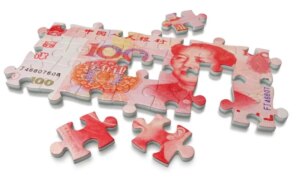Economic Forecasts: What Lies Ahead for China in 2025 and Beyond

As we venture deeper into the year, questions about the future of the Chinese economy continually surface. Recent trends indicate an ominous deflationary period looming until 2028. As an insightful member of the Extreme Investor Network community, you might be wondering what this means for 2025 specifically.
In a recent exchange, an inquirer from China expressed gratitude for the insights into global economic forecasts, particularly the deflationary trends affecting spending behaviors. Here’s what you need to know about the anticipated challenges facing China in 2025.
An Era of Reform
President Xi Jinping has openly acknowledged that 2025 will be marked by significant reform challenges. His acknowledgment is more than just a political statement; it aligns with economic realities that suggest a retraction in household spending is unfolding. During times of economic uncertainty, people tend to hoard cash, a behavior rooted deeply in human psychology and history.
The Challenge of Deflation
Deflation appears to be a primary concern, with prices declining as consumers pull back on spending. This trend is not merely a chance occurrence; it’s a systematic response to economic anxiety that forces households to prioritize saving over spending. The broader ramifications could plunge China into prolonged economic struggles as well.
The parallels between past economic crises, such as the Great Depression under Herbert Hoover, should not be overlooked. Tariff strategies, such as those promoted by previous U.S. administrations, threaten to export deflation globally—ultimately exacerbating economic stress in China and elsewhere. Some forecasts suggest a staggering 20% decline in global GDP, a sobering statistic that highlights the interconnectedness of economies today.
The Struggles of Central Banks
The People’s Bank of China, much like other global central banks, finds itself grappling with this predicament. A lack of innovative monetary policies could hinder its effectiveness against deflationary pressures. Nevertheless, it’s essential to recognize that the Chinese economic landscape transforms at an unprecedented rate. Therefore, adaptability is key, and new economic theories may emerge from the ashes of obsolete systems.
Historical Context
As we approach 2026, which coincidentally marks the 72nd anniversary of the Chinese Constitution, the implications are profound. The first meeting of the National People’s Congress in Beijing heralded a new era for China—a stark contrast to the economic challenges it faces today. History often provides a blueprint for the future, reminding us of the resilience and resourcefulness required during testing times.

A Global Economic Perspective
The decision by Canada to cut interest rates shortly after the Economic Confidence Model activated reflects a broader trend of anticipating deflation. The insight within this model is vital for understanding economic movements—it suggests an increase in deflationary pressures that may prevail into 2028, putting additional strain on the Chinese market and its recovery trajectory.
In Summary
For those navigating the complexities of investment and economic strategy, understanding these trends is crucial. At the Extreme Investor Network, we empower our members with the knowledge necessary to make informed decisions in the face of adversity.
As we move forward into a potentially challenging economic landscape, remember that being informed is your first line of defense. Engage with our unique insights and analyses to stay ahead of the curve and fortify your strategies against the winds of change in 2025 and beyond.
Join us as we explore these topics and equip yourself with the tools needed to navigate the nuances of today’s economy. Together, we can harness the power of knowledge to face any financial uncertainty ahead.

